-
Global Automotive Friction Brake System Market, by Brake Type
-
Global Automotive
-
Friction Brake System Market, by Technology
-
Global Automotive Friction Brake
-
System Market, by Vehicle Type
-
Global Automotive Friction Brake System
-
Market, by Actuation
-
Global Automotive Friction Brake System Market,
-
by Off-Highway Brake
-
Global Automotive Friction Brake System Market,
-
by Off-Highway Applications
-
Global Automotive Friction Brake System
-
Market, by Region
-
Market Introduction
-
Definition
-
Scope of
-
the Study
-
Market Structure
-
Research
-
Methodology
-
Research Process
-
Primary Research
-
Secondary
-
Research
-
Market Size Estimation
-
Forecast Model
-
List of
-
Assumptions
-
Market Dynamics
-
Introduction
-
Drivers
-
Increasing
-
demand for passenger and commercial vehicles
-
Growing safety concerns among
-
consumers
-
Rising awareness of road safety regulations
-
Driver 4
-
Driver 5
-
Drivers
-
Impact Analysis
-
Restraints
-
High cost
-
of friction brake systems
-
Stringent emission regulations
-
Restraints
-
Impact Analysis
-
Opportunities
-
Growing
-
demand for electric vehicles
-
Increasing popularity of autonomous
-
vehicles
-
Opportunity 3
-
Challenge
-
Challenge
-
Impact of COVID-19
-
Impact on
-
Automotive Friction Brake System market
-
Impact on YoY Growth
-
Market Factor Analysis
-
Value Chain Analysis/Supply Chain
-
Analysis
-
Porter’s Five Forces Model
-
Bargaining
-
Power of Suppliers
-
Bargaining Power of Buyers
-
Threat of
-
New Entrants
-
Threat of Substitutes
-
Intensity of Rivalry
-
Market SWOT
-
analysis
-
Market PESTEL analysis
-
Global
-
Automotive Friction Brake System Market Size Estimation & Forecast, by Brake
-
Type
-
Introduction
-
Disc
-
Drum
-
Global
-
Automotive Friction Brake System Market Size Estimation & Forecast, by
-
Technology
-
Introduction
-
Anti-lock Braking System (ABS)
-
Electronic
-
Stability Control (ESC)
-
Traction Control System (TCS)
-
Electronic
-
Brakeforce Distribution (EBD)
-
Global Automotive Friction
-
Brake System Market Size Estimation & Forecast, by VEHICLE TYPE
-
Introduction
-
Passenger
-
Car
-
Commercial Vehicle
-
Global
-
Automotive Friction Brake System Market Size Estimation & Forecast, by
-
ACTUATION
-
Introduction
-
Hydraulic
-
Pneumatic
-
Global
-
Automotive Friction Brake System Market Size Estimation & Forecast, by
-
OFF-HIGHWAY BRAKE
-
Introduction
-
Hydraulic
-
Wet Brake
-
Dynamic Brake
-
Hydrostatic Brake
-
Other
-
Global
-
Automotive Friction Brake System Market Size Estimation & Forecast, by
-
OFF-HIGHWAY APPLICATIONS
-
Introduction
-
Construction
-
Equipment
-
Mining Equipment
-
Agriculture Tractors
-
Global
-
Automotive Friction Brake System Market Size Estimation & Forecast, by
-
Region
-
Introduction
-
North America
-
Market Estimates
-
& Forecast, by Region, 2019-2032
-
Market Estimates & Forecast,
-
by Brake Type, 2019-2032
-
Market Estimates & Forecast, by Technology,
-
Market Estimates & Forecast, by Vehicle Type, 2019-2032
-
Market Estimates
-
& Forecast, by Actuation, 2019-2032
-
Market Estimates & Forecast,
-
by Off-Highway Application, 2019-2032
-
Market Estimates & Forecast,
-
by Off-Highway Brake, 2019-2032
-
US
-
Market Estimates & Forecast,
-
by Brake Type, 2019-2032
-
Market Estimates & Forecast,
-
by Technology, 2019-2032
-
Market Estimates & Forecast,
-
by Vehicle Type, 2019-2032
-
Market Estimates & Forecast,
-
by Actuation, 2019-2032
-
Market Estimates & Forecast,
-
by Off-Highway Brakes, 2019-2032
-
Market Estimates & Forecast,
-
by Off-Highway Application, 2019-2032
-
Canada
-
Market
-
Estimates & Forecast, by Brake Type, 2019-2032
-
Market
-
Estimates & Forecast, by Technology, 2019-2032
-
Market
-
Estimates & Forecast, by Vehicle Type, 2019-2032
-
Market
-
Estimates & Forecast, by Actuation, 2019-2032
-
Market
-
Estimates & Forecast, by Off-Highway Brakes, 2019-2032
-
Market
-
Estimates & Forecast, by Off-Highway Application, 2019-2032
-
Mexico
-
Market
-
Estimates & Forecast, by Brake Type, 2019-2032
-
Market
-
Estimates & Forecast, by Technology, 2019-2032
-
Market
-
Estimates & Forecast, by Vehicle Type, 2019-2032
-
Market
-
Estimates & Forecast, by Actuation, 2019-2032
-
Market
-
Estimates & Forecast, by Off-Highway Brakes, 2019-2032
-
Market
-
Estimates & Forecast, by Off-Highway Application, 2019-2032
-
Europe
-
Market Estimates
-
& Forecast, by Region, 2019-2032
-
Market Estimates & Forecast,
-
by Brake Type, 2019-2032
-
Market Estimates & Forecast, by Technology,
-
Market Estimates & Forecast, by Vehicle Type, 2019-2032
-
Market Estimates
-
& Forecast, by Actuation, 2019-2032
-
Market Estimates & Forecast,
-
by Off-Highway Application, 2019-2032
-
Market Estimates & Forecast,
-
by Off-Highway Brake, 2019-2032
-
UK
-
Market Estimates & Forecast,
-
by Brake Type, 2019-2032
-
Market Estimates & Forecast,
-
by Technology, 2019-2032
-
Market Estimates & Forecast,
-
by Vehicle Type, 2019-2032
-
Market Estimates & Forecast,
-
by Actuation, 2019-2032
-
Market Estimates & Forecast,
-
by Off-Highway Brakes, 2019-2032
-
Market Estimates & Forecast,
-
by Off-Highway Application, 2019-2032
-
Germany
-
Market
-
Estimates & Forecast, by Brake Type, 2019-2032
-
Market
-
Estimates & Forecast, by Technology, 2019-2032
-
Market
-
Estimates & Forecast, by Vehicle Type, 2019-2032
-
Market
-
Estimates & Forecast, by Actuation, 2019-2032
-
Market
-
Estimates & Forecast, by Off-Highway Brakes, 2019-2032
-
Market
-
Estimates & Forecast, by Off-Highway Application, 2019-2032
-
France
-
Market
-
Estimates & Forecast, by Brake Type, 2019-2032
-
Market
-
Estimates & Forecast, by Technology, 2019-2032
-
Market
-
Estimates & Forecast, by Vehicle Type, 2019-2032
-
Market
-
Estimates & Forecast, by Actuation, 2019-2032
-
Market
-
Estimates & Forecast, by Off-Highway Brakes, 2019-2032
-
Market
-
Estimates & Forecast, by Off-Highway Application, 2019-2032
-
Rest of
-
Europe
-
Market Estimates & Forecast, by Brake Type, 2019-2032
-
Market
-
Estimates & Forecast, by Technology, 2019-2032
-
Market
-
Estimates & Forecast, by Vehicle Type, 2019-2032
-
Market
-
Estimates & Forecast, by Actuation, 2019-2032
-
Market
-
Estimates & Forecast, by Off-Highway Brakes, 2019-2032
-
Market
-
Estimates & Forecast, by Off-Highway Application, 2019-2032
-
Asia-Pacific
-
Market Estimates
-
& Forecast, by Region, 2019-2032
-
Market Estimates & Forecast,
-
by Brake Type, 2019-2032
-
Market Estimates & Forecast, by Technology,
-
Market Estimates & Forecast, by Vehicle Type, 2019-2032
-
Market Estimates
-
& Forecast, by Actuation, 2019-2032
-
Market Estimates & Forecast,
-
by Off-Highway Application, 2019-2032
-
Market Estimates & Forecast,
-
by Off-Highway Brake, 2019-2032
-
China
-
Market Estimates & Forecast,
-
by Brake Type, 2019-2032
-
Market Estimates & Forecast,
-
by Technology, 2019-2032
-
Market Estimates & Forecast,
-
by Vehicle Type, 2019-2032
-
Market Estimates & Forecast,
-
by Actuation, 2019-2032
-
Market Estimates & Forecast,
-
by Off-Highway Brakes, 2019-2032
-
Market Estimates & Forecast,
-
by Off-Highway Application, 2019-2032
-
India
-
Market
-
Estimates & Forecast, by Brake Type, 2019-2032
-
Market
-
Estimates & Forecast, by Technology, 2019-2032
-
Market
-
Estimates & Forecast, by Vehicle Type, 2019-2032
-
Market
-
Estimates & Forecast, by Actuation, 2019-2032
-
Market
-
Estimates & Forecast, by Off-Highway Brakes, 2019-2032
-
Market
-
Estimates & Forecast, by Off-Highway Application, 2019-2032
-
Japan
-
Market
-
Estimates & Forecast, by Brake Type, 2019-2032
-
Market
-
Estimates & Forecast, by Technology, 2019-2032
-
Market
-
Estimates & Forecast, by Vehicle Type, 2019-2032
-
Market
-
Estimates & Forecast, by Actuation, 2019-2032
-
Market
-
Estimates & Forecast, by Off-Highway Brakes, 2019-2032
-
Market
-
Estimates & Forecast, by Off-Highway Application, 2019-2032
-
Rest of
-
Asia-Pacific
-
Market Estimates & Forecast, by Brake Type,
-
Market Estimates & Forecast, by Technology, 2019-2032
-
Market
-
Estimates & Forecast, by Vehicle Type, 2019-2032
-
Market
-
Estimates & Forecast, by Actuation, 2019-2032
-
Market
-
Estimates & Forecast, by Off-Highway Brakes, 2019-2032
-
Market
-
Estimates & Forecast, by Off-Highway Application, 2019-2032
-
Rest of
-
the World
-
Market Estimates & Forecast, by Region, 2019-2032
-
Market Estimates
-
& Forecast, by Brake Type, 2019-2032
-
Market Estimates & Forecast,
-
by Technology, 2019-2032
-
Market Estimates & Forecast, by Vehicle Type,
-
Market Estimates & Forecast, by Actuation, 2019-2032
-
Market Estimates
-
& Forecast, by Off-Highway Application, 2019-2032
-
Market Estimates & Forecast,
-
by Off-Highway Brake, 2019-2032
-
Middle East & Africa
-
Market
-
Estimates & Forecast, by Brake Type, 2019-2032
-
Market
-
Estimates & Forecast, by Technology, 2019-2032
-
Market
-
Estimates & Forecast, by Vehicle Type, 2019-2032
-
Market
-
Estimates & Forecast, by Actuation, 2019-2032
-
Market
-
Estimates & Forecast, by Off-Highway Brakes, 2019-2032
-
Market
-
Estimates & Forecast, by Off-Highway Application, 2019-2032
-
South America
-
Market
-
Estimates & Forecast, by Brake Type, 2019-2032
-
Market
-
Estimates & Forecast, by Technology, 2019-2032
-
Market
-
Estimates & Forecast, by Vehicle Type, 2019-2032
-
Market
-
Estimates & Forecast, by Actuation, 2019-2032
-
Market
-
Estimates & Forecast, by Off-Highway Brakes, 2019-2032
-
Market
-
Estimates & Forecast, by Off-Highway Application, 2019-2032
-
Competitive
-
Landscape
-
Introduction
-
Key Players Market Share Analysis,
-
Competitive Benchmarking
-
Key Developments & Growth Strategies
-
New Product Development/Product Innovation
-
Mergers & Acquisitions
-
Contracts
-
& Agreements
-
Expansions & Investments
-
Company Profiles
-
Continental AG (Germany)
-
Company
-
Overview
-
Financial Overview
-
Products Offered
-
Key Developments
-
SWOT Analysis
-
Key Strategies
-
Robert Bosch
-
GmbH (Germany)
-
ZF Friedrichshafen AG (Germany)
-
Brembo S.p.A. (Italy)
-
Akebono
-
Brake Corporation (Japan)
-
Nisshinbo Brake Inc. (Japan)
-
TMD Friction
-
Group (Germany)
-
Federal-Mogul Corporation (US)
-
Honeywell
-
International Inc. (US)
-
Mando Corporation (South Korea)
-
Sumitomo
-
Rubber Industries Ltd. (Japan)
-
Company 12
-
Company
-
Company 14
-
Company 15
-
Other players
-
LIST
-
OF TABLES
-
LIST OF ASSUMPTIONS 31
-
TABLE 2
-
GLOBAL AUTOMOTIVE FRICTION BRAKE SYSTEMS, BY BRAKE TYPE, 2019–2032 (USD MILLION)
-
GLOBAL AUTOMOTIVE FRICTION BRAKE SYSTEMS, BY TECHNOLOGY, 2019–2032
-
(USD MILLION) 49
-
GLOBAL AUTOMOTIVE FRICTION BRAKE SYSTEMS, BY VEHICLE
-
TYPE, 2019–2032 (USD MILLION) 51
-
GLOBAL AUTOMOTIVE FRICTION
-
BRAKE SYSTEMS, BY ACTUATION, 2019–2032 (USD MILLION) 52
-
TABLE 6
-
GLOBAL AUTOMOTIVE FRICTION BRAKE SYSTEMS, BY OFF HIGHWAY BRAKE, 2019–2032
-
(USD MILLION) 54
-
GLOBAL AUTOMOTIVE FRICTION BRAKE SYSTEMS, BY OFF HIGHWAY
-
APPLICATION, 2019–2032 (USD MILLION) 56
-
GLOBAL AUTOMOTIVE FRICTION
-
BRAKE SYSTEMS, BY REGION, 2019–2032 (USD MILLION) 58
-
TABLE 9
-
NORTH AMERICA: AUTOMOTIVE FRICTION BRAKE SYSTEMS MARKET, BY COUNTRY, 2019–2032
-
(USD MILLION) 60
-
NORTH AMERICA: AUTOMOTIVE FRICTION BRAKE SYSTEMS MARKET,
-
BY BRAKE TYPE, 2019–2032 (USD MILLION) 62
-
NORTH AMERICA: AUTOMOTIVE
-
FRICTION BRAKE SYSTEMS MARKET, BY TECHNOLOGY, 2019–2032 (USD MILLION) 64
-
TABLE 12
-
NORTH AMERICA: AUTOMOTIVE FRICTION BRAKE SYSTEMS MARKET, BY VEHICLE TYPE, 2019–2032
-
(USD MILLION) 66
-
NORTH AMERICA AUTOMOTIVE FRICTION BRAKE SYSTEMS, BY
-
ACTUATION, 2019–2032 (USD MILLION) 68
-
NORTH AMERICA AUTOMOTIVE
-
FRICTION BRAKE SYSTEMS, BY OFF HIGHWAY BRAKE, 2019–2032 (USD MILLION) 70
-
TABLE 15
-
NORTH AMERICA AUTOMOTIVE FRICTION BRAKE SYSTEMS, BY OFF HIGHWAY APPLICATION, 2019–2032
-
(USD MILLION) 72
-
US: AUTOMOTIVE FRICTION BRAKE SYSTEMS MARKET, BY BRAKE
-
TYPE, 2019–2032 (USD MILLION) 74
-
US: AUTOMOTIVE FRICTION
-
BRAKE SYSTEMS MARKET, BY TECHNOLOGY, 2019–2032 (USD MILLION) 76
-
TABLE 18
-
US: AUTOMOTIVE FRICTION BRAKE SYSTEMS MARKET, BY VEHICLE TYPE, 2019–2032 (USD
-
MILLION) 78
-
US AUTOMOTIVE FRICTION BRAKE SYSTEMS, BY ACTUATION,
-
US AUTOMOTIVE FRICTION BRAKE
-
SYSTEMS, BY OFF HIGHWAY BRAKE, 2019–2032 (USD MILLION) 82
-
TABLE 21
-
US AUTOMOTIVE FRICTION BRAKE SYSTEMS, BY OFF HIGHWAY APPLICATION, 2019–2032
-
(USD MILLION) 84
-
CANADA: AUTOMOTIVE FRICTION BRAKE SYSTEMS MARKET,
-
BY BRAKE TYPE, 2019–2032 (USD MILLION) 86
-
CANADA: AUTOMOTIVE FRICTION
-
BRAKE SYSTEMS MARKET, BY TECHNOLOGY, 2019–2032 (USD MILLION) 88
-
TABLE 24
-
CANADA: AUTOMOTIVE FRICTION BRAKE SYSTEMS MARKET, BY VEHICLE TYPE, 2019–2032
-
(USD MILLION) 90
-
CANADA AUTOMOTIVE FRICTION BRAKE SYSTEMS, BY ACTUATION,
-
CANADA AUTOMOTIVE FRICTION
-
BRAKE SYSTEMS, BY OFF HIGHWAY BRAKE, 2019–2032 (USD MILLION) 94
-
TABLE 27
-
CANADA AUTOMOTIVE FRICTION BRAKE SYSTEMS, BY OFF HIGHWAY APPLICATION, 2019–2032
-
(USD MILLION) 96
-
MEXICO: AUTOMOTIVE FRICTION BRAKE SYSTEMS MARKET,
-
BY BRAKE TYPE, 2019–2032 (USD MILLION) 98
-
MEXICO: AUTOMOTIVE FRICTION
-
BRAKE SYSTEMS MARKET, BY TECHNOLOGY, 2019–2032 (USD MILLION) 100
-
TABLE 30
-
MEXICO: AUTOMOTIVE FRICTION BRAKE SYSTEMS MARKET, BY VEHICLE TYPE, 2019–2032
-
(USD MILLION) 102
-
MEXICO AUTOMOTIVE FRICTION BRAKE SYSTEMS,
-
BY ACTUATION, 2019–2032 (USD MILLION) 104
-
MEXICO AUTOMOTIVE FRICTION
-
BRAKE SYSTEMS, BY OFF HIGHWAY BRAKE, 2019–2032 (USD MILLION) 106
-
TABLE 33
-
MEXICO AUTOMOTIVE FRICTION BRAKE SYSTEMS, BY OFF HIGHWAY APPLICATION, 2019–2032
-
(USD MILLION) 108
-
EUROPE: AUTOMOTIVE FRICTION BRAKE SYSTEMS
-
MARKET, BY COUNTRY, 2019–2032 (USD MILLION) 110
-
EUROPE: AUTOMOTIVE FRICTION
-
BRAKE SYSTEMS MARKET, BY BRAKE TYPE, 2019–2032 (USD MILLION) 112
-
TABLE 36
-
EUROPE: AUTOMOTIVE FRICTION BRAKE SYSTEMS MARKET, BY TECHNOLOGY, 2019–2032
-
(USD MILLION) 114
-
EUROPE: AUTOMOTIVE FRICTION BRAKE SYSTEMS
-
MARKET, BY VEHICLE TYPE, 2019–2032 (USD MILLION) 116
-
TABLE 38
-
EUROPE AUTOMOTIVE FRICTION BRAKE SYSTEMS, BY ACTUATION, 2019–2032 (USD MILLION)
-
EUROPE AUTOMOTIVE FRICTION BRAKE SYSTEMS, BY OFF HIGHWAY BRAKE,
-
EUROPE AUTOMOTIVE FRICTION
-
BRAKE SYSTEMS, BY OFF HIGHWAY APPLICATION, 2019–2032 (USD MILLION) 122
-
TABLE 41
-
UK: AUTOMOTIVE FRICTION BRAKE SYSTEMS MARKET, BY BRAKE TYPE, 2019–2032 (USD
-
MILLION) 124
-
UK: AUTOMOTIVE FRICTION BRAKE SYSTEMS MARKET, BY TECHNOLOGY,
-
UK: AUTOMOTIVE FRICTION BRAKE
-
SYSTEMS MARKET, BY VEHICLE TYPE, 2019–2032 (USD MILLION) 128
-
TABLE 44
-
UK AUTOMOTIVE FRICTION BRAKE SYSTEMS, BY ACTUATION, 2019–2032 (USD MILLION)
-
UK AUTOMOTIVE FRICTION BRAKE SYSTEMS, BY OFF HIGHWAY BRAKE, 2019–2032
-
(USD MILLION) 132
-
UK AUTOMOTIVE FRICTION BRAKE SYSTEMS,
-
BY OFF HIGHWAY APPLICATION, 2019–2032 (USD MILLION) 134
-
TABLE 47
-
GERMANY: AUTOMOTIVE FRICTION BRAKE SYSTEMS MARKET, BY BRAKE TYPE, 2019–2032
-
(USD MILLION) 136
-
GERMANY: AUTOMOTIVE FRICTION BRAKE SYSTEMS
-
MARKET, BY TECHNOLOGY, 2019–2032 (USD MILLION) 138
-
TABLE 49
-
GERMANY: AUTOMOTIVE FRICTION BRAKE SYSTEMS MARKET, BY VEHICLE TYPE, 2019–2032
-
(USD MILLION) 140
-
GERMANY AUTOMOTIVE FRICTION BRAKE SYSTEMS,
-
BY ACTUATION, 2019–2032 (USD MILLION) 142
-
GERMANY AUTOMOTIVE FRICTION
-
BRAKE SYSTEMS, BY OFF HIGHWAY BRAKE, 2019–2032 (USD MILLION) 144
-
TABLE 52
-
GERMANY AUTOMOTIVE FRICTION BRAKE SYSTEMS, BY OFF HIGHWAY APPLICATION, 2019–2032
-
(USD MILLION) 146
-
FRANCE: AUTOMOTIVE FRICTION BRAKE SYSTEMS
-
MARKET, BY BRAKE TYPE, 2019–2032 (USD MILLION) 148
-
TABLE 54
-
FRANCE: AUTOMOTIVE FRICTION BRAKE SYSTEMS MARKET, BY TECHNOLOGY, 2019–2032
-
(USD MILLION) 150
-
FRANCE: AUTOMOTIVE FRICTION BRAKE SYSTEMS
-
MARKET, BY VEHICLE TYPE, 2019–2032 (USD MILLION) 152
-
TABLE 56
-
FRANCE AUTOMOTIVE FRICTION BRAKE SYSTEMS, BY ACTUATION, 2019–2032 (USD MILLION)
-
FRANCE AUTOMOTIVE FRICTION BRAKE SYSTEMS, BY OFF HIGHWAY BRAKE,
-
FRANCE AUTOMOTIVE FRICTION
-
BRAKE SYSTEMS, BY OFF HIGHWAY APPLICATION, 2019–2032 (USD MILLION) 158
-
TABLE 59
-
ITALY: AUTOMOTIVE FRICTION BRAKE SYSTEMS MARKET, BY BRAKE TYPE, 2019–2032
-
(USD MILLION) 160
-
ITALY: AUTOMOTIVE FRICTION BRAKE SYSTEMS
-
MARKET, BY TECHNOLOGY, 2019–2032 (USD MILLION) 162
-
TABLE 61
-
ITALY: AUTOMOTIVE FRICTION BRAKE SYSTEMS MARKET, BY VEHICLE TYPE, 2019–2032
-
(USD MILLION) 164
-
ITALY AUTOMOTIVE FRICTION BRAKE SYSTEMS,
-
BY ACTUATION, 2019–2032 (USD MILLION) 166
-
ITALY AUTOMOTIVE FRICTION
-
BRAKE SYSTEMS, BY OFF HIGHWAY BRAKE, 2019–2032 (USD MILLION) 168
-
TABLE 64
-
ITALY AUTOMOTIVE FRICTION BRAKE SYSTEMS, BY OFF HIGHWAY APPLICATION, 2019–2032
-
(USD MILLION) 170
-
SPAIN: AUTOMOTIVE FRICTION BRAKE SYSTEMS
-
MARKET, BY BRAKE TYPE, 2019–2032 (USD MILLION) 172
-
TABLE 66
-
SPAIN: AUTOMOTIVE FRICTION BRAKE SYSTEMS MARKET, BY TECHNOLOGY, 2019–2032
-
(USD MILLION) 174
-
SPAIN: AUTOMOTIVE FRICTION BRAKE SYSTEMS
-
MARKET, BY VEHICLE TYPE, 2019–2032 (USD MILLION) 176
-
TABLE 68
-
SPAIN AUTOMOTIVE FRICTION BRAKE SYSTEMS, BY ACTUATION, 2019–2032 (USD MILLION)
-
SPAIN AUTOMOTIVE FRICTION BRAKE SYSTEMS, BY OFF HIGHWAY BRAKE,
-
SPAIN AUTOMOTIVE FRICTION BRAKE
-
SYSTEMS, BY OFF HIGHWAY APPLICATION, 2019–2032 (USD MILLION) 182
-
TABLE 71
-
REST OF EUROPE: AUTOMOTIVE FRICTION BRAKE SYSTEMS MARKET, BY BRAKE TYPE, 2019–2032
-
(USD MILLION) 184
-
REST OF EUROPE: AUTOMOTIVE FRICTION BRAKE
-
SYSTEMS MARKET, BY TECHNOLOGY, 2019–2032 (USD MILLION) 186
-
TABLE 73
-
REST OF EUROPE: AUTOMOTIVE FRICTION BRAKE SYSTEMS MARKET, BY VEHICLE TYPE, 2019–2032
-
(USD MILLION) 188
-
REST OF EUROPE AUTOMOTIVE FRICTION BRAKE
-
SYSTEMS, BY ACTUATION, 2019–2032 (USD MILLION) 190
-
TABLE 75
-
REST OF EUROPE AUTOMOTIVE FRICTION BRAKE SYSTEMS, BY OFF HIGHWAY BRAKE, 2019–2032
-
(USD MILLION) 192
-
REST OF EUROPE AUTOMOTIVE FRICTION BRAKE
-
SYSTEMS, BY OFF HIGHWAY APPLICATION, 2019–2032 (USD MILLION) 194
-
TABLE 77
-
ASIA-PACIFIC: AUTOMOTIVE FRICTION BRAKE SYSTEMS MARKET, BY COUNTRY, 2019–2032
-
(USD MILLION) 196
-
ASIA-PACIFIC: AUTOMOTIVE FRICTION BRAKE
-
SYSTEMS MARKET, BY BRAKE TYPE, 2019–2032 (USD MILLION) 198
-
TABLE 79
-
ASIA-PACIFIC: AUTOMOTIVE FRICTION BRAKE SYSTEMS MARKET, BY TECHNOLOGY, 2019–2032
-
(USD MILLION) 200
-
ASIA-PACIFIC: AUTOMOTIVE FRICTION BRAKE
-
SYSTEMS MARKET, BY VEHICLE TYPE, 2019–2032 (USD MILLION) 202
-
TABLE 81
-
ASIA-PACIFIC AUTOMOTIVE FRICTION BRAKE SYSTEMS, BY ACTUATION, 2019–2032 (USD
-
MILLION) 204
-
ASIA-PACIFIC AUTOMOTIVE FRICTION BRAKE SYSTEMS, BY
-
OFF HIGHWAY BRAKE, 2019–2032 (USD MILLION) 206
-
ASIA-PACIFIC AUTOMOTIVE
-
FRICTION BRAKE SYSTEMS, BY OFF HIGHWAY APPLICATION, 2019–2032 (USD MILLION)
-
CHINA: AUTOMOTIVE FRICTION BRAKE SYSTEMS MARKET, BY BRAKE TYPE,
-
CHINA: AUTOMOTIVE FRICTION
-
BRAKE SYSTEMS MARKET, BY TECHNOLOGY, 2019–2032 (USD MILLION) 212
-
TABLE 86
-
CHINA: AUTOMOTIVE FRICTION BRAKE SYSTEMS MARKET, BY VEHICLE TYPE, 2019–2032
-
(USD MILLION) 214
-
CHINA AUTOMOTIVE FRICTION BRAKE SYSTEMS,
-
BY ACTUATION, 2019–2032 (USD MILLION) 216
-
CHINA AUTOMOTIVE FRICTION
-
BRAKE SYSTEMS, BY OFF HIGHWAY BRAKE, 2019–2032 (USD MILLION) 218
-
TABLE 89
-
CHINA AUTOMOTIVE FRICTION BRAKE SYSTEMS, BY OFF HIGHWAY APPLICATION, 2019–2032
-
(USD MILLION) 220
-
INDIA: AUTOMOTIVE FRICTION BRAKE SYSTEMS
-
MARKET, BY BRAKE TYPE, 2019–2032 (USD MILLION) 222
-
TABLE 91
-
INDIA: AUTOMOTIVE FRICTION BRAKE SYSTEMS MARKET, BY TECHNOLOGY, 2019–2032
-
(USD MILLION) 224
-
INDIA: AUTOMOTIVE FRICTION BRAKE SYSTEMS
-
MARKET, BY VEHICLE TYPE, 2019–2032 (USD MILLION) 226
-
TABLE 93
-
INDIA AUTOMOTIVE FRICTION BRAKE SYSTEMS, BY ACTUATION, 2019–2032 (USD MILLION)
-
INDIA AUTOMOTIVE FRICTION BRAKE SYSTEMS, BY OFF HIGHWAY BRAKE,
-
INDIA AUTOMOTIVE FRICTION BRAKE
-
SYSTEMS, BY OFF HIGHWAY APPLICATION, 2019–2032 (USD MILLION) 232
-
TABLE 96
-
JAPAN: AUTOMOTIVE FRICTION BRAKE SYSTEMS MARKET, BY BRAKE TYPE, 2019–2032
-
(USD MILLION) 234
-
JAPAN: AUTOMOTIVE FRICTION BRAKE SYSTEMS
-
MARKET, BY TECHNOLOGY, 2019–2032 (USD MILLION) 236
-
TABLE 98
-
JAPAN: AUTOMOTIVE FRICTION BRAKE SYSTEMS MARKET, BY VEHICLE TYPE, 2019–2032
-
(USD MILLION) 238
-
JAPAN AUTOMOTIVE FRICTION BRAKE SYSTEMS,
-
BY ACTUATION, 2019–2032 (USD MILLION) 240
-
JAPAN AUTOMOTIVE FRICTION
-
BRAKE SYSTEMS, BY OFF HIGHWAY BRAKE, 2019–2032 (USD MILLION) 242
-
TABLE 101
-
JAPAN AUTOMOTIVE FRICTION BRAKE SYSTEMS, BY OFF HIGHWAY APPLICATION, 2019–2032
-
(USD MILLION) 244
-
SOUTH KOREA: AUTOMOTIVE FRICTION BRAKE
-
SYSTEMS MARKET, BY BRAKE TYPE, 2019–2032 (USD MILLION) 246
-
TABLE 103
-
SOUTH KOREA: AUTOMOTIVE FRICTION BRAKE SYSTEMS MARKET, BY TECHNOLOGY, 2019–2032
-
(USD MILLION) 248
-
SOUTH KOREA: AUTOMOTIVE FRICTION BRAKE
-
SYSTEMS MARKET, BY VEHICLE TYPE, 2019–2032 (USD MILLION) 250
-
TABLE 105
-
SOUTH KOREA AUTOMOTIVE FRICTION BRAKE SYSTEMS, BY ACTUATION, 2019–2032 (USD
-
MILLION) 252
-
SOUTH KOREA AUTOMOTIVE FRICTION BRAKE SYSTEMS, BY
-
OFF HIGHWAY BRAKE, 2019–2032 (USD MILLION) 254
-
SOUTH KOREA AUTOMOTIVE
-
FRICTION BRAKE SYSTEMS, BY OFF HIGHWAY APPLICATION, 2019–2032 (USD MILLION)
-
REST OF ASIA-PACIFIC: AUTOMOTIVE FRICTION BRAKE SYSTEMS MARKET,
-
BY BRAKE TYPE, 2019–2032 (USD MILLION) 258
-
REST OF ASIA-PACIFIC:
-
AUTOMOTIVE FRICTION BRAKE SYSTEMS MARKET, BY TECHNOLOGY, 2019–2032 (USD MILLION)
-
REST OF ASIA-PACIFIC: AUTOMOTIVE FRICTION BRAKE SYSTEMS MARKET,
-
BY VEHICLE TYPE, 2019–2032 (USD MILLION) 262
-
REST OF ASIA-PACIFIC
-
AUTOMOTIVE FRICTION BRAKE SYSTEMS, BY ACTUATION, 2019–2032 (USD MILLION) 264
-
TABLE 112
-
REST OF ASIA-PACIFIC AUTOMOTIVE FRICTION BRAKE SYSTEMS, BY OFF HIGHWAY BRAKE, 2019–2032
-
(USD MILLION) 266
-
REST OF ASIA-PACIFIC AUTOMOTIVE FRICTION
-
BRAKE SYSTEMS, BY OFF HIGHWAY APPLICATION, 2019–2032 (USD MILLION) 268
-
TABLE 114
-
MIDDLE EAST & AFRICA: AUTOMOTIVE FRICTION BRAKE SYSTEMS MARKET, BY COUNTRY,
-
MIDDLE EAST & AFRICA:
-
AUTOMOTIVE FRICTION BRAKE SYSTEMS MARKET, BY BRAKE TYPE, 2019–2032 (USD MILLION)
-
MIDDLE EAST & AFRICA: AUTOMOTIVE FRICTION BRAKE SYSTEMS
-
MARKET, BY TECHNOLOGY, 2019–2032 (USD MILLION) 274
-
TABLE 117
-
MIDDLE EAST & AFRICA: AUTOMOTIVE FRICTION BRAKE SYSTEMS MARKET, BY VEHICLE TYPE,
-
MIDDLE EAST & AFRICA AUTOMOTIVE
-
FRICTION BRAKE SYSTEMS, BY ACTUATION, 2019–2032 (USD MILLION) 278
-
TABLE 119
-
MIDDLE EAST & AFRICA AUTOMOTIVE FRICTION BRAKE SYSTEMS, BY OFF HIGHWAY BRAKE,
-
MIDDLE EAST & AFRICA AUTOMOTIVE
-
FRICTION BRAKE SYSTEMS, BY OFF HIGHWAY APPLICATION, 2019–2032 (USD MILLION)
-
UAE: AUTOMOTIVE FRICTION BRAKE SYSTEMS MARKET, BY BRAKE TYPE,
-
UAE: AUTOMOTIVE FRICTION BRAKE
-
SYSTEMS MARKET, BY TECHNOLOGY, 2019–2032 (USD MILLION) 286
-
TABLE 123
-
UAE: AUTOMOTIVE FRICTION BRAKE SYSTEMS MARKET, BY VEHICLE TYPE, 2019–2032
-
(USD MILLION) 288
-
UAE AUTOMOTIVE FRICTION BRAKE SYSTEMS,
-
BY ACTUATION, 2019–2032 (USD MILLION) 290
-
UAE AUTOMOTIVE FRICTION
-
BRAKE SYSTEMS, BY OFF HIGHWAY BRAKE, 2019–2032 (USD MILLION) 292
-
TABLE 126
-
UAE AUTOMOTIVE FRICTION BRAKE SYSTEMS, BY OFF HIGHWAY APPLICATION, 2019–2032
-
(USD MILLION) 294
-
SAUDI ARABIA: AUTOMOTIVE FRICTION BRAKE
-
SYSTEMS MARKET, BY BRAKE TYPE, 2019–2032 (USD MILLION) 296
-
TABLE 128
-
SAUDI ARABIA: AUTOMOTIVE FRICTION BRAKE SYSTEMS MARKET, BY TECHNOLOGY, 2019–2032
-
(USD MILLION) 298
-
SAUDI ARABIA: AUTOMOTIVE FRICTION BRAKE
-
SYSTEMS MARKET, BY VEHICLE TYPE, 2019–2032 (USD MILLION) 300
-
TABLE 130
-
SAUDI ARABIA AUTOMOTIVE FRICTION BRAKE SYSTEMS, BY ACTUATION, 2019–2032 (USD
-
MILLION) 302
-
SAUDI ARABIA AUTOMOTIVE FRICTION BRAKE SYSTEMS, BY
-
OFF HIGHWAY BRAKE, 2019–2032 (USD MILLION) 304
-
SAUDI ARABIA AUTOMOTIVE
-
FRICTION BRAKE SYSTEMS, BY OFF HIGHWAY APPLICATION, 2019–2032 (USD MILLION)
-
SOUTH AFRICA: AUTOMOTIVE FRICTION BRAKE SYSTEMS MARKET, BY BRAKE
-
TYPE, 2019–2032 (USD MILLION) 308
-
SOUTH AFRICA: AUTOMOTIVE
-
FRICTION BRAKE SYSTEMS MARKET, BY TECHNOLOGY, 2019–2032 (USD MILLION) 310
-
TABLE 135
-
SOUTH AFRICA: AUTOMOTIVE FRICTION BRAKE SYSTEMS MARKET, BY VEHICLE TYPE, 2019–2032
-
(USD MILLION) 312
-
SOUTH AFRICA AUTOMOTIVE FRICTION BRAKE
-
SYSTEMS, BY ACTUATION, 2019–2032 (USD MILLION) 314
-
TABLE 137
-
SOUTH AFRICA AUTOMOTIVE FRICTION BRAKE SYSTEMS, BY OFF HIGHWAY BRAKE, 2019–2032
-
(USD MILLION) 316
-
SOUTH AFRICA AUTOMOTIVE FRICTION BRAKE
-
SYSTEMS, BY OFF HIGHWAY APPLICATION, 2019–2032 (USD MILLION) 318
-
TABLE 139
-
REST OF MEA: AUTOMOTIVE FRICTION BRAKE SYSTEMS MARKET, BY BRAKE TYPE, 2019–2032
-
(USD MILLION) 320
-
REST OF MEA: AUTOMOTIVE FRICTION BRAKE
-
SYSTEMS MARKET, BY TECHNOLOGY, 2019–2032 (USD MILLION) 322
-
TABLE 141
-
REST OF MEA: AUTOMOTIVE FRICTION BRAKE SYSTEMS MARKET, BY VEHICLE TYPE, 2019–2032
-
(USD MILLION) 324
-
REST OF MEA AUTOMOTIVE FRICTION BRAKE
-
SYSTEMS, BY ACTUATION, 2019–2032 (USD MILLION) 326
-
TABLE 143
-
REST OF MEA AUTOMOTIVE FRICTION BRAKE SYSTEMS, BY OFF HIGHWAY BRAKE, 2019–2032
-
(USD MILLION) 328
-
REST OF MEA AUTOMOTIVE FRICTION BRAKE
-
SYSTEMS, BY OFF HIGHWAY APPLICATION, 2019–2032 (USD MILLION) 330
-
TABLE 145
-
SOUTH AMERICA: AUTOMOTIVE FRICTION BRAKE SYSTEMS MARKET, BY COUNTRY, 2019–2032
-
(USD MILLION) 332
-
SOUTH AMERICA: AUTOMOTIVE FRICTION BRAKE
-
SYSTEMS MARKET, BY BRAKE TYPE, 2019–2032 (USD MILLION) 334
-
TABLE 147
-
SOUTH AMERICA: AUTOMOTIVE FRICTION BRAKE SYSTEMS MARKET, BY TECHNOLOGY, 2019–2032
-
(USD MILLION) 336
-
SOUTH AMERICA: AUTOMOTIVE FRICTION BRAKE
-
SYSTEMS MARKET, BY VEHICLE TYPE, 2019–2032 (USD MILLION) 338
-
TABLE 149
-
SOUTH AMERICA AUTOMOTIVE FRICTION BRAKE SYSTEMS, BY ACTUATION, 2019–2032 (USD
-
MILLION) 340
-
SOUTH AMERICA AUTOMOTIVE FRICTION BRAKE SYSTEMS,
-
BY OFF HIGHWAY BRAKE, 2019–2032 (USD MILLION) 342
-
SOUTH AMERICA AUTOMOTIVE
-
FRICTION BRAKE SYSTEMS, BY OFF HIGHWAY APPLICATION, 2019–2032 (USD MILLION)
-
BRAZIL: AUTOMOTIVE FRICTION BRAKE SYSTEMS MARKET, BY BRAKE TYPE,
-
BRAZIL: AUTOMOTIVE FRICTION
-
BRAKE SYSTEMS MARKET, BY TECHNOLOGY, 2019–2032 (USD MILLION) 348
-
TABLE 154
-
BRAZIL: AUTOMOTIVE FRICTION BRAKE SYSTEMS MARKET, BY VEHICLE TYPE, 2019–2032
-
(USD MILLION) 350
-
BRAZIL AUTOMOTIVE FRICTION BRAKE SYSTEMS,
-
BY ACTUATION, 2019–2032 (USD MILLION) 352
-
BRAZIL AUTOMOTIVE FRICTION
-
BRAKE SYSTEMS, BY OFF HIGHWAY BRAKE, 2019–2032 (USD MILLION) 354
-
TABLE 157
-
BRAZIL AUTOMOTIVE FRICTION BRAKE SYSTEMS, BY OFF HIGHWAY APPLICATION, 2019–2032
-
(USD MILLION) 356
-
ARGENTINA: AUTOMOTIVE FRICTION BRAKE
-
SYSTEMS MARKET, BY BRAKE TYPE, 2019–2032 (USD MILLION) 358
-
TABLE 159
-
ARGENTINA: AUTOMOTIVE FRICTION BRAKE SYSTEMS MARKET, BY TECHNOLOGY, 2019–2032
-
(USD MILLION) 360
-
ARGENTINA: AUTOMOTIVE FRICTION BRAKE
-
SYSTEMS MARKET, BY VEHICLE TYPE, 2019–2032 (USD MILLION) 362
-
TABLE 161
-
ARGENTINA AUTOMOTIVE FRICTION BRAKE SYSTEMS, BY ACTUATION, 2019–2032 (USD
-
MILLION) 364
-
ARGENTINA AUTOMOTIVE FRICTION BRAKE SYSTEMS, BY OFF
-
HIGHWAY BRAKE, 2019–2032 (USD MILLION) 366
-
ARGENTINA AUTOMOTIVE
-
FRICTION BRAKE SYSTEMS, BY OFF HIGHWAY APPLICATION, 2019–2032 (USD MILLION)
-
REST OF SOUTH AMERICA: AUTOMOTIVE FRICTION BRAKE SYSTEMS MARKET,
-
BY BRAKE TYPE, 2019–2032 (USD MILLION) 370
-
REST OF SOUTH AMERICA:
-
AUTOMOTIVE FRICTION BRAKE SYSTEMS MARKET, BY TECHNOLOGY, 2019–2032 (USD MILLION)
-
REST OF SOUTH AMERICA: AUTOMOTIVE FRICTION BRAKE SYSTEMS MARKET,
-
BY VEHICLE TYPE, 2019–2032 (USD MILLION) 374
-
REST OF SOUTH AMERICA
-
AUTOMOTIVE FRICTION BRAKE SYSTEMS, BY ACTUATION, 2019–2032 (USD MILLION) 376
-
TABLE 168
-
REST OF SOUTH AMERICA AUTOMOTIVE FRICTION BRAKE SYSTEMS, BY OFF HIGHWAY BRAKE, 2019–2032
-
(USD MILLION) 378
-
REST OF SOUTH AMERICA AUTOMOTIVE FRICTION
-
BRAKE SYSTEMS, BY OFF HIGHWAY APPLICATION, 2019–2032 (USD MILLION) 380
-
TABLE 170
-
KEY DEVELOPMENTS: CONTRACTS & AGREEMENTS 382
-
KEY DEVELOPMENTS: PARTNERSHIPS
-
& COLLABORATIONS 384
-
KEY DEVELOPMENTS: PRODUCT DEVELOPMENTS/LAUNCHES
-
CONTINENTAL: PRODUCTS OFFERED 388
-
CONTINENTAL: KEY DEVELOPMENTS
-
BOSCH: PRODUCTS OFFERED 392
-
BOSCH: KEY DEVELOPMENTS
-
ZF: PRODUCTS OFFERED 396
-
ZF: KEY DEVELOPMENTS
-
BREMBO: PRODUCTS OFFERED 400
-
BREMBO: KEY DEVELOPMENTS
-
AKEBONO: PRODUCTS OFFERED 404
-
AKEBONO: KEY DEVELOPMENTS
-
NISSHINBO: PRODUCTS OFFERED 408
-
NISSHINBO: KEY DEVELOPMENTS
-
TMD: PRODUCTS OFFERED 412
-
TMD: KEY DEVELOPMENTS
-
FEDERAL-MOGUL: PRODUCTS OFFERED 416
-
FEDERAL-MOGUL: KEY
-
DEVELOPMENTS 418
-
HONEYWELL: PRODUCTS OFFERED 420
-
TABLE 190
-
HONEYWELL: KEY DEVELOPMENTS 422
-
MANDO: PRODUCTS OFFERED 424
-
TABLE 192
-
MANDO: KEY DEVELOPMENTS 426
-
SUMITOMO: PRODUCTS OFFERED 428
-
TABLE 194
-
SUMITOMO: KEY DEVELOPMENTS 430
-
COMPANY 12: PRODUCTS OFFERED
-
COMPANY 12: KEY DEVELOPMENTS 434
-
COMPANY 13: PRODUCTS
-
OFFERED 436
-
COMPANY 13: KEY DEVELOPMENTS 438
-
TABLE 199
-
COMPANY 14: PRODUCTS OFFERED 440
-
COMPANY 14: KEY DEVELOPMENTS
-
COMPANY 15: PRODUCTS OFFERED 444
-
COMPANY 15: PRODUCTS
-
OFFERED 446
-
LIST OF FIGURES
-
FIGURE 1
-
MARKET SYNOPSIS 20
-
GLOBAL AUTOMOTIVE FRICTION BRAKE SYSTEMS
-
MARKET ANALYSIS, BY BRAKE TYPE 21
-
GLOBAL AUTOMOTIVE FRICTION
-
BRAKE SYSTEMS MARKET ANALYSIS, BY TECHNOLOGY 22
-
GLOBAL AUTOMOTIVE FRICTION
-
BRAKE SYSTEMS MARKET ANALYSIS, BY VEHICLE TYPE 23
-
GLOBAL AUTOMOTIVE FRICTION
-
BRAKE SYSTEMS MARKET ANALYSIS, BY ACTUATION 23
-
GLOBAL AUTOMOTIVE FRICTION
-
BRAKE SYSTEMS MARKET ANALYSIS, BY OFF HIGHWAY BRAKE 23
-
GLOBAL AUTOMOTIVE FRICTION
-
BRAKE SYSTEMS MARKET ANALYSIS, BY OFF HIGHWAY APPLICATION 23
-
FIGURE 8
-
GLOBAL AUTOMOTIVE FRICTION BRAKE SYSTEMS MARKET: STRUCTURE 23
-
FIGURE 9
-
RESEARCH PROCESS 26
-
TOP-DOWN & BOTTOM-UP APPROACHES 29
-
FIGURE 11
-
MARKET DYNAMICS OVERVIEW 32
-
DRIVER IMPACT ANALYSIS: GLOBAL AUTOMOTIVE
-
FRICTION BRAKE SYSTEMS MARKET 34
-
RESTRAINT IMPACT ANALYSIS:
-
GLOBAL AUTOMOTIVE FRICTION BRAKE SYSTEMS MARKET 35
-
PORTER’S FIVE
-
FORCES ANALYSIS: GLOBAL AUTOMOTIVE FRICTION BRAKE SYSTEMS 38
-
FIGURE 15
-
SUPPLY CHAIN ANALYSIS: GLOBAL AUTOMOTIVE FRICTION BRAKE SYSTEMS 40
-
FIGURE 16
-
GLOBAL AUTOMOTIVE FRICTION BRAKE SYSTEMS, BY BRAKE TYPE, 2022 (% SHARE) 45
-
FIGURE 17
-
GLOBAL AUTOMOTIVE FRICTION BRAKE SYSTEMS, BY BRAKE TYPE, 2019–2032 (USD MILLION)
-
GLOBAL AUTOMOTIVE FRICTION BRAKE SYSTEMS, BY TECHNOLOGY, 2022
-
(% SHARE) 47
-
GLOBAL AUTOMOTIVE FRICTION BRAKE SYSTEMS, BY TECHNOLOGY,
-
GLOBAL AUTOMOTIVE FRICTION
-
BRAKE SYSTEMS, BY VEHICLE TYPE, 2022 (% SHARE) 50
-
GLOBAL AUTOMOTIVE FRICTION
-
BRAKE SYSTEMS, BY VEHICLE TYPE, 2019–2032 (USD MILLION) 50
-
FIGURE 22
-
GLOBAL AUTOMOTIVE FRICTION BRAKE SYSTEMS, BY ACTUATION, 2019–2032 (USD MILLION)
-
GLOBAL AUTOMOTIVE FRICTION BRAKE SYSTEMS, BY ACTUATION, 2019–2032
-
(USD MILLION) 50
-
GLOBAL AUTOMOTIVE FRICTION BRAKE SYSTEMS, BY OFF
-
HIGHWAY BRAKE, 2019–2032 (USD MILLION) 50
-
GLOBAL AUTOMOTIVE FRICTION
-
BRAKE SYSTEMS, BY OFF HIGHWAY BRAKE, 2019–2032 (USD MILLION) 50
-
FIGURE 26
-
GLOBAL AUTOMOTIVE FRICTION BRAKE SYSTEMS, BY OFF HIGHWAY APPLICATION, 2019–2032
-
(USD MILLION) 50
-
GLOBAL AUTOMOTIVE FRICTION BRAKE SYSTEMS, BY OFF
-
HIGHWAY APPLICATION, 2019–2032 (USD MILLION) 50
-
GLOBAL AUTOMOTIVE FRICTION
-
BRAKE SYSTEMS, BY REGION, 2019 TO 2032 (USD MILLION) 50
-
GLOBAL AUTOMOTIVE FRICTION
-
BRAKE SYSTEMS, BY REGION, 2022 (% SHARE) 53
-
NORTH AMERICA: AUTOMOTIVE
-
FRICTION BRAKE SYSTEMS MARKET SHARE, BY COUNTRY, 2022 (% SHARE) 54
-
FIGURE 31
-
EUROPE: AUTOMOTIVE FRICTION BRAKE SYSTEMS MARKET SHARE, BY COUNTRY, 2022 (% SHARE)
-
ASIA-PACIFIC: AUTOMOTIVE FRICTION BRAKE SYSTEMS MARKET SHARE,
-
BY COUNTRY, 2022 (% SHARE) 67
-
MIDDLE EAST & AFRICA:
-
AUTOMOTIVE FRICTION BRAKE SYSTEMS MARKET SHARE, BY COUNTRY, 2022 (% SHARE) 75
-
FIGURE 34
-
SOUTH AMERICA: AUTOMOTIVE FRICTION BRAKE SYSTEMS MARKET SHARE, BY COUNTRY, 2022
-
(% SHARE) 81
-
BENCHMARKING OF MAJOR COMPETITORS 87
-
FIGURE 36
-
GLOBAL AUTOMOTIVE FRICTION BRAKE SYSTEMS MARKET SHARE ANALYSIS, 2022 88
-
FIGURE 37
-
CONTINENTAL: FINANCIAL OVERVIEW SNAPSHOT 89
-
CONTINENTAL: SWOT ANALYSIS
-
BOSCH: FINANCIAL OVERVIEW SNAPSHOT 91
-
FIGURE 40
-
BOSCH: SWOT ANALYSIS 92
-
ZF: FINANCIAL OVERVIEW SNAPSHOT 93
-
FIGURE 42
-
ZF: SWOT ANALYSIS 94
-
BREMBO: FINANCIAL OVERVIEW SNAPSHOT 95
-
FIGURE 44
-
BREMBO: SWOT ANALYSIS 96
-
AKEBONO: FINANCIAL OVERVIEW SNAPSHOT
-
AKEBONO: SWOT ANALYSIS 98
-
NISSHINBO: FINANCIAL
-
OVERVIEW SNAPSHOT 99
-
NISSHINBO: SWOT ANALYSIS 100
-
FIGURE 49
-
TMD: FINANCIAL OVERVIEW SNAPSHOT 101
-
TMD: SWOT ANALYSIS
-
FEDERAL-MOGUL: FINANCIAL OVERVIEW SNAPSHOT 103
-
FIGURE 52
-
FEDERAL-MOGUL: SWOT ANALYSIS 104
-
HONEYWELL: FINANCIAL OVERVIEW
-
SNAPSHOT 105
-
HONEYWELL: SWOT ANALYSIS 106
-
FIGURE 55
-
MANDO: FINANCIAL OVERVIEW SNAPSHOT 107
-
MANDO: SWOT ANALYSIS
-
SUMITOMO: FINANCIAL OVERVIEW SNAPSHOT 109
-
FIGURE 58
-
SUMITOMO: SWOT ANALYSIS 110
-
COMPANY 12: FINANCIAL OVERVIEW SNAPSHOT
-
COMPANY 12: SWOT ANALYSIS 112
-
COMPANY 13: FINANCIAL
-
OVERVIEW SNAPSHOT 113
-
COMPANY 13: SWOT ANALYSIS 114
-
FIGURE 63
-
COMPANY 14: FINANCIAL OVERVIEW SNAPSHOT 115
-
COMPANY 14: SWOT ANALYSIS
-
COMPANY 15: FINANCIAL OVERVIEW SNAPSHOT 117
-
FIGURE 66
-
COMPANY 15: FINANCIAL OVERVIEW SNAPSHOT 118

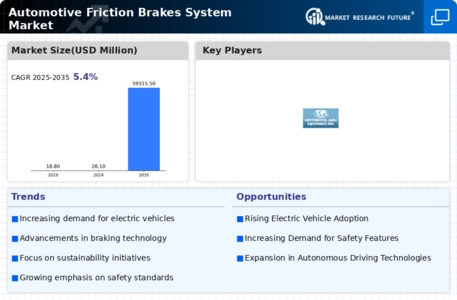
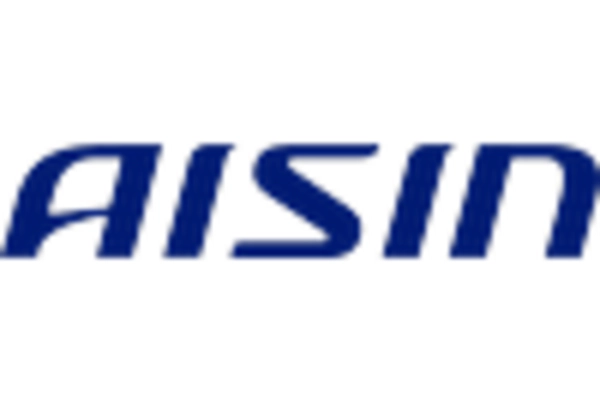
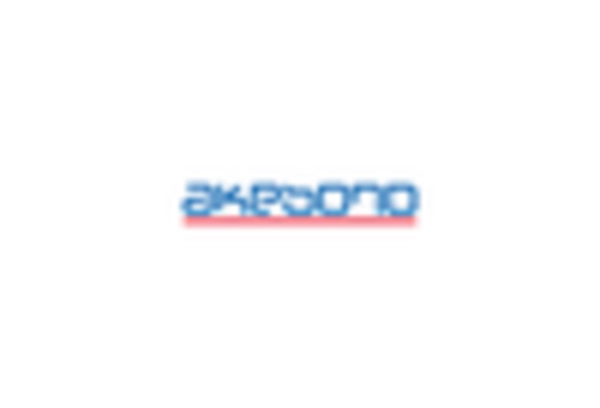
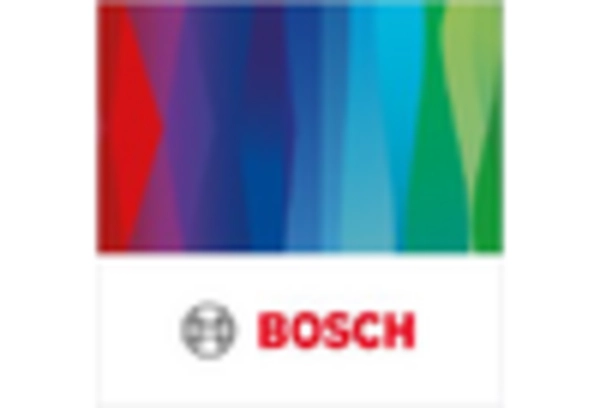
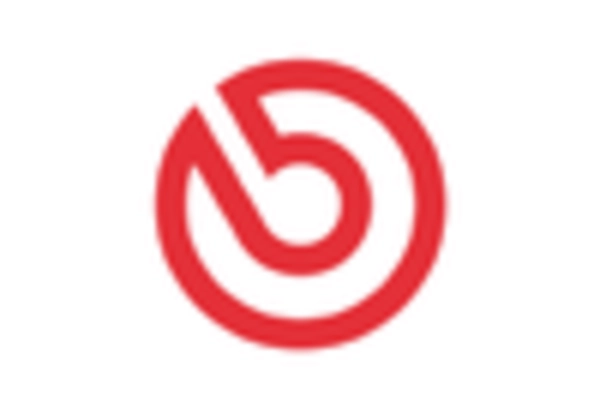
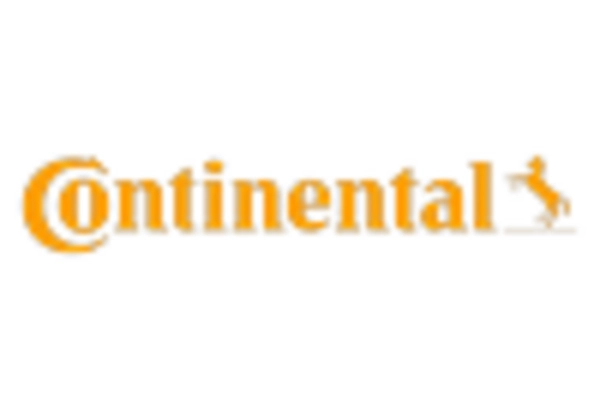
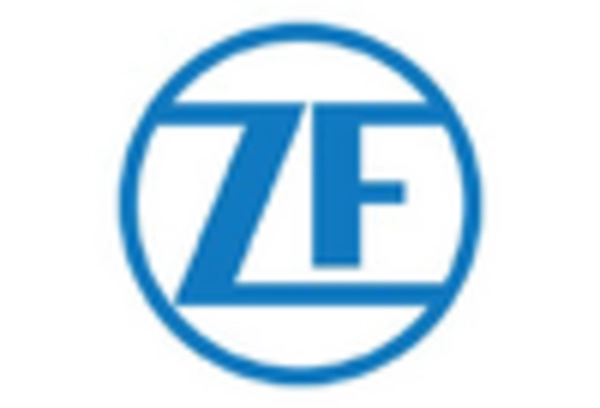









Leave a Comment